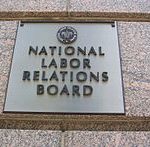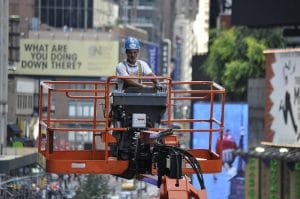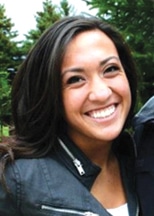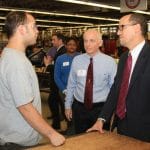 MichCanSka is an international snowmobiling charity ride from Michigan, through Canada and to Alaska that benefits the Diabetes Research Institute, a world leader in cure-focused diabetes research. Labeled the “Iditarod of Snowmobiling,” the event is the brainchild of Bill Bradfield of Cadillac, MI, a retired 50-year sheet metal worker and Vietnam veteran who has type 2 diabetes. In 2010, the group rode from Michigan to Alaska through five states, five provinces, 4,000 miles and four time zones. The median age of those that participated was 62 and the 54 riders raised $102,000.00 for Diabetes Research. Since then they have collectively ridden 440,000 miles from Tok, Alaska to the Atlantic Ocean to the little town of Perce, Quebec. The 2014 ride in Quebec was 3,131 miles long.
MichCanSka is an international snowmobiling charity ride from Michigan, through Canada and to Alaska that benefits the Diabetes Research Institute, a world leader in cure-focused diabetes research. Labeled the “Iditarod of Snowmobiling,” the event is the brainchild of Bill Bradfield of Cadillac, MI, a retired 50-year sheet metal worker and Vietnam veteran who has type 2 diabetes. In 2010, the group rode from Michigan to Alaska through five states, five provinces, 4,000 miles and four time zones. The median age of those that participated was 62 and the 54 riders raised $102,000.00 for Diabetes Research. Since then they have collectively ridden 440,000 miles from Tok, Alaska to the Atlantic Ocean to the little town of Perce, Quebec. The 2014 ride in Quebec was 3,131 miles long.
This year, Bradfield has organized a new trip that will start on February 5th with four days in Michigan, four days in Ontario, one day off, then a flight to Norway and a six day
ride through Norway, Sweden, and Finland. On February 21st they are scheduled to cross the Finland border and go into Russia for four days of riding, some of it to be done north of the Arctic Circle to the remote Russian village of Murmansk. On February 24th, they will conclude in St. Petersburg, Russia.
“It is my passion of a lifetime to raise awareness of the need for future research for this dreaded disease,” said Bradfield, who has been snowmobiling for 41 years. Throughout his career as a Union sheet metal worker, Bradfield has been raising funds and awareness about diabetes, a chronic disease that impacts our families.
“It gave me a tremendous feeling of gratitude being able to help people less fortunate than myself, not knowing that someday I too would be stricken with this horrible disease,” he said.
Some participants have diabetes. Others are riding in honor or in memory of a loved one with diabetes. Maintaining a distance of 200 miles per day, participants set out in three groups each, launching their rides a day apart.
According to Bradfield, “Vietnam veterans have saying, all gave some and some gave all.” He continued that “I consider myself fortunate that I did not give all. I have been a fighter all my life for one cause or another and see no reason to change now. So I will continue to fight for a cure for diabetes and hopefully it will make a difference for me and others that fight on the same battlefield.”
Visit the group’s website at www.michcanska.com to follow their activities and find out how you too can contribute to this worthy cause.
Author: paul
The BMWED/SMART-Mechanical bargaining coalition met for the first time with the National Carriers’ Conference Committee (NCCC) yesterday at the NCCC’s offices in Crystal City, Virginia. The parties reviewed and discussed in general terms their respective “Section 6 notices” seeking changes to existing agreements.
The parties both pledged to work diligently to reach a voluntary agreement. The next bargaining session is scheduled for February 24 and 25, 2015 at the NCCC offices. The topic of bargaining will be healthcare issues. Prior to that meeting, the parties will present agreed upon questions to their respective healthcare experts who will provide answers to the bargaining committees prior to the February meeting. The parties believe this process will allow the bargaining committee maximum time at the bargaining table to focus on crafting an agreement acceptable to all parties.
Updates will be provided after each bargaining session.
Joe Fraley
General Chairman
SMART
Train and engine-service employees at the Alliance Terminal Railroad LLC have voted in favor of being represented by SMART. The National Mediation Board certified the election results on December 30. Owned by OmniTRAX Inc. and based in Haslet, Texas, Alliance Terminal Railroad is responsible for switching and operations at BNSF Railway Co.’s Alliance Intermodal Facility near Dallas/Fort Worth. Formed in 2004, the short line interchanges with BNSF.

This new rule will require companies to postpone virtually all litigation over the eligibility of employees until after workers vote on whether or not they wish to form a Union. This will stop management from engaging in a series of stall tactics that have been used for decades to slow down and ultimately swamp union organizing drives.
Regional NLRB directors will be given the authority to rule that litigation that delays an election is unnecessary until after an election has taken place. The regulation will eliminate a previously-required 25-day period between the time an election is ordered and the election itself.
It will also require employers to add personal email addresses and phone numbers to lists of workers eligible they are required to provide during an election. An NLRB decision from that same week in mid-December prohibits employers from denying union supporters from the ability to use company email for organizing purposes.
The Consumer Financial Protection Bureau (CFPB) ) is suing a Texas-based company, Union Workers Credit Services, for deceiving consumers into paying fees to sign up for a sham credit card. The Bureau alleges that the company falsely advertises a general-use credit card that, in actuality, can only be used to buy products from the company. Union Workers Credit Services also deceptively implies an affiliation with unions by, among other things, using pictures of nurses, firefighters, and other public servants in its advertising.
Despite their name, Union Workers Credit Services is not union affiliated, but they have been preying on union members. Please spread word about this to your fellow members.
Click here to read more from the CFPB.
An articulation agreement between the Ohio Board of Regents and the seven unionized sheet metal training centers in the state will make it easier for new apprenticeship graduates to earn their associate’s degrees.
The first state-wide agreement of its kind in the nation, it allows sheet metal apprentices the ability to earn additional math and science credits during their apprenticeship they would have otherwise had to earn on a college campus.
“This agreement proves what we as an industry have been saying all along,” said James Page, administrator for the International Training Institute, the education arm of the unionized sheet metal and air conditioning industry. “Apprenticeships are another side of higher education. If our Ohio apprentices choose to pursue their associate’s degree, they’ll already all but have it when they complete their apprenticeship.”
Before the agreement, sheet metal apprentices completed 40 percent of their associate degree requirements. Under the new agreement, the Ohio Valley Coordinators group expects to see an increase during students’ apprenticeships. So, when they graduate from the apprenticeship, they have 60 percent of their associate’s degree completed.
“It should be the difference between taking 10 more classes to earn the degree to two or three classes,” said Rob Gartner, training director for Sheet Metal Workers Local No. 24 in Columbus. “These guys work 40 or more hours per week, attend classes three nights a week and they have families. The fewer classes they have to take when they leave the apprenticeship, the better.”
“To me, the critical part is it puts all the sheet metal apprentices in Ohio in the same pool, so no matter where in the state that apprentice lives, or the college he or she picks, we set a common bar that everyone is going to hit,” said John Nesta, training coordinator at Sheet Metal Workers Local No. 33 in Cleveland. “It’s just another example of the quality of the training, the quality of the programs. It’s more validation from the outside about the higher levels of training we provide.”
Ohio is home to the third largest sheet metal apprenticeship system in the United States – behind California and New York.
In January 2011, the Ohio Board of Regents undertook the task of developing a statewide umbrella agreement to encompass all sheet metal apprenticeship programs in Ohio. That spring, the Ohio Board of Regents granted the Sheet Metal Workers apprenticeship programs an exception allowing the apprentices to receive math and science credits for classes taught by journeymen instructors who do not hold a master’s degree.
Aside from credits earned, the agreement assures the industry that an apprentice in Cleveland will have a similar knowledge base and skillset as an apprentice in Las Vegas or Philadelphia, providing graduates the credentials to travel anywhere in the country to work.
“These apprentices put a lot of work into going to work, going to school to get a journeyman’s card, but that other piece of paper means a lot to them and their families,” Gartner said.
Currently, students from the Ohio, Kentucky and West Virginia border receive credit through Columbus State Community College. Once they graduate, they can transfer their credits and attend a college closer to home to complete their degrees, such as the applied science in HVAC degree.
The articulation agreement falls in line with the Registered Apprenticeship – College Consortium, a new effort launched earlier this year by the U.S. Department of Labor, in partnership with the U.S. Department of Education. The consortium promotes graduates of registered apprenticeship programs to turn their years of hard work into college credits.
“The decision to prepare a student for college or career is no longer an option in today’s competitive global economy,” said Arne Duncan, U.S. Secretary of Education in a release regarding the consortium. “To ensure a highly skilled and trained workforce that can compete with the best and brightest across the world, we have to train our students for college and career. This program provides a much needed pathway for students to develop needed technical skills while also pursuing a college degree, strengthening the middle class.”
To receive the exception, heads of math and science departments at Columbus State Community College, Cuyahoga Community College and Owens College researched the history of the unionized sheet metal apprenticeship as well as the instructors, training centers and curriculum.
“The college department heads were impressed with the quality of the International Training Institute curriculum and materials used by the Ohio Valley Coordinators group,” Gartner said. “The guys from the group – John Nesta, Gary Shinkle, Eugene Frazier, Dan Kline – they worked together to make this happen.”

The project, requiring in excess of 20 members working non-stop through the better part of 2014, required the old staging and steel to be replaced with the new gigantic video display measuring over 25,600 square feet (77.69 feet high x 329.65 feet wide). Once complete, the sign will adorn the façade of the hotel with the types of messages and advertisements found throughout the rest of Times Square.
Local 137 signatory North Shore Neon Sign, Inc. is the contractor on the project. Their motto “We Hang to Live” is a tongue and cheek take on the company’s 50-year tradition of designing and hanging signs for customers in Times Square and all across the New York metropolitan area—all of which has been done in partnership with the men and women of Local 137. According to Local 137 Business Manager Dante Dano, “If you are a contractor or business who wants to break records and stand out from the crowd, you need to surround yourself with extraordinary people. That’s what these members are. Once again, they make me proud to represent them.”

The New York sign industry is currently undergoing a revitalization with the upsurge in the U.S. economy, bringing tourism and advertising dollars back to the city. The first tenant in the World Trade Center, Condé Nast, has already moved in, and members of Local 137 were there to install the signs and visual displays for the publishing company. Brookfield Properties, a major worldwide developer with billions of dollars of new development in New York City, recently signed a 20-year agreement to install signs on all their New York area properties with the help of Local 137 members.
Local 137 members are known for one more thing as well. Every year, millions of Americans across the country and in Times Square ring in the New Year by watching the New Year’s Ball lowered in Times Square. The next time you watch it, remember that the people behind the design, fabrication, installation, and operation of the Times Square Ball are none other than your brothers and sisters from Local 137.
A Wisconsin State Representative has announced that he will introduce a Right-to-Work for less bill in the upcoming legislative session. The move comes just days after a former Americans for Prosperity associate, Lorri Pickens, announced a new tea party group called “Wisconsin Right to Work.”.
Wisconsin House Speaker Robin Vos has suggested in the past that “Right-to-Work” would not be on the party’s agenda during the two-year legislative session beginning in January. However, following the announcement of the tea party backed “Wisconsin Right to Work” group, he changed his tune. Vos now says that “he looks forward to discussing the benefits of becoming a right-to-work state.”
Senate Majority Leader Scott Fitzgerald has said “he was open to the idea.”
Gov. Scott Walker is sticking to his talking point on the matter, saying “Right-to-Work isn’t a priority.” His spokeswoman, Laurel Patrick, added that, “Walker is focused on creating jobs and anything that distracts from that goal isn’t a priority.” It should be noted that this was wxactly what was said by Michigan Governor Rick Snyder in the weeks leading up to when Right-to-Work for less legislation was snuck through in Michigan.
One impediment to passing such legislation has been the support Walker has received from the leadership of Operating Engineers Local 139.
Scott Fitzgerald said Republicans could exempt the operating engineers from the bill as a reward for their support. He also admitted that exempting them from the Right to Work for less bill could make the law more likely to be shot down in a court of law, which would make the GOP less likely to carve out the operating engineers. In an interview with the Milwaukee Journal Sentinel, Local 139’s Business Manager noted he was not made aware of the GOP attempt to push through Right to Work for less.
In 1993, as a freshmen legislator, Walker co-sponsored Right to Work for less legislation.

Friends of the Gibson family have started a gun raffle to help raise money to assist Kelsey with her rehabilitation efforts. For $20 per ticket, participants have a chance to win a new Remington Model 870 Express. This 12-gauge pump gun has twin action bars to prevent binding and twisting.
The winner will be drawn when 200 tickets are sold or on Jan. 1, 2015. To purchase tickets, contact Bud Morse at (419) 619-9161, Scott Hockin at (616) 293-9918, Don Silseth at (616) 443-2613 or Jerry Gibson at (616) 308-6381. Checks can be made payable to “FBO Kelsey Gibson.”

The Local 17 JATC is a leader in expanding apprenticeship training to under-represented communities through partnerships that include the Building Pathways Program, the Women Apprentices in Non-Traditional Occupations program, and the Helmets to Hardhats for veterans.
After a guided tour of the JATC from John Healy, Local 17 training director, Perez sat for a roundtable discussion with seven apprenticeship students as well as local union leaders and Massachusetts Labor Secretary Rachel Kaprielian and asked what, if anything, he should tell President Barack Obama about the program.
“I’d tell President Obama to promote this idea across the country, to get kids interested,” said Patrick Pochette, in his fourth year of the apprenticeship program and a also a member found through the Building Pathways program, “Because of this program, I have a good job.”
Perez met with representatives of the local media to discuss the new emphasis being placed on apprenticeships by the Obama Administration. In keeping with imitation being the sincerest form of flattery, Perez recognized the state of Massachusetts as a leader in developing new programs far beyond their time. In particular, he recognized Local 17’s JATC as a model for inclusion that can be incorporated by every other trade across the United States.
Local 17 Business Manager Robert Butler noted that, “we appreciate the recognition and hope to continue to live up to it by being the best represented and highest skilled craftsmen in the Eastern New England sheet metal industry.”
